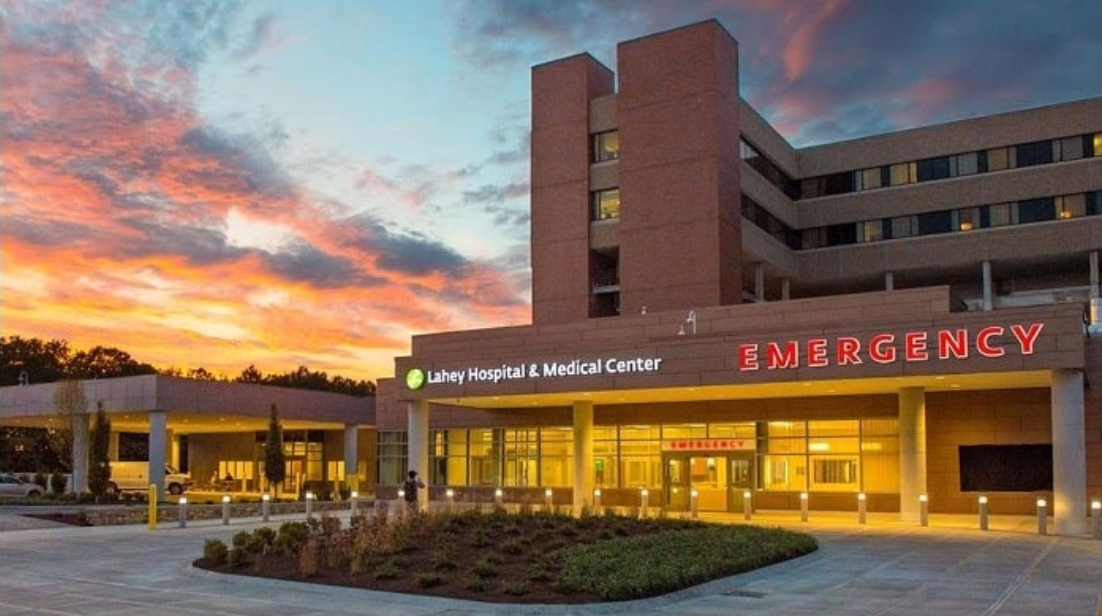Image: Lahey Hospital & Medical Center
When faced with a temporary vacancy the busy Critical Care unit at Lahey Hospital and Medical Center, does what every other healthcare facility would do, contacts a rapid response staffing agency to fill the vacancy quickly. Desperate for a qualified candidate, the Critical Care Nurse Manager complies with the terms of the agency’s contract and agrees to the agency rate requested for the expedited candidate.
This caught the attention of Contract Staffing Specialist, Kaley Porter and Talent Acquisition Operations Manager, Stefanie Smolinsky. After speaking with an independent consultant hired to analyze operations at Lahey Health, Porter realized that the methods of sourcing candidates across the organization were inconsistent, inefficient, and often quite expensive.
Talent Acquisition Operations Manager,
Stefanie Smolinsky
 “Any hiring manager could call a staffing agency, sign the fee agreement, and we’d never know about it,” said Talent Acquisition Operations Manager, Stefanie Smolinsky. “We had no way of tracking performance, so if a provider didn’t do well in one location they could easily get a job in one of our other hospitals because we had no way of tracking it.”
“Any hiring manager could call a staffing agency, sign the fee agreement, and we’d never know about it,” said Talent Acquisition Operations Manager, Stefanie Smolinsky. “We had no way of tracking performance, so if a provider didn’t do well in one location they could easily get a job in one of our other hospitals because we had no way of tracking it.”
The heart of the matter is how do you acquire high-performing temporary talent seamlessly and without overpaying? And how do you discover if your healthcare organization is overpaying in the first place?
Smolinsky and Porter knew right away that Lahey would need outside expertise and robust vendor management technology to successfully implement a new approach to sourcing, contracting, paying, and reporting temporary staffing needs.
Key Challenges
- Inconsistent process for sourcing, onboarding, and paying temporary staff
- Paying premium rates to rapid response vendors
- Insufficient tracking of contracted agency vendors, the volume of temporary labor used, and money spent
- Manual timesheets and invoices were time-consuming and problematic for accounting
- The organization is at risk due to inefficient temporary hiring practices
Outcomes Achieved
- Overall savings of $1.57 MM in less than one year
- Reduced use of rapid response agencies by 50%, saving $1.27 MM in one year
- Average savings of $1,000 per contractor due to vendor absorbing orientation costs ($300,000 savings to-date)
- Estimated savings of 35 accounting hours per week
Read the case study to learn how HWL and Lahey Health partnered to centralize all contract staffing, including nursing, allied health, non-clinical, and IT for instant visibility into talent usage and saved $1.57 MM in one years time.
“The technology was impressive, however, for Smolinsky, HWL’s staffing industry expertise was the clincher. “I loved that they were staffing industry leaders,” she says. “They brought invaluable industry experience and knowledge that you wouldn’t necessarily have if you were just looking for a software solution.”
Find Out What You’re Really Spending & How Much You Could Save
HWL is uniquely positioned to act as an honest broker for our clients. The combination of our vendor-neutral philosophy, access to real-time market intelligence, and first-hand knowledge of agencies’ inner workings position us to negotiate the most competitive rates.
Allow us to demonstrate how we can help your organization turn real-time data and staffing strategies into actionable results. Contact us today, 833-495-4636 ext. 5 / sales@hwlmsp.com for more information or to schedule a demo.
Additional Resources
- Paying Too Much for Contingent Nursing & Allied Health Professionals?
- How to Save 10% on Contingent Labor Costs, Guaranteed
- HWL Addresses Urgent Staffing Needs of Facility Hard Hit by COVID-19
- COVID-19 Surge Staffing Program


